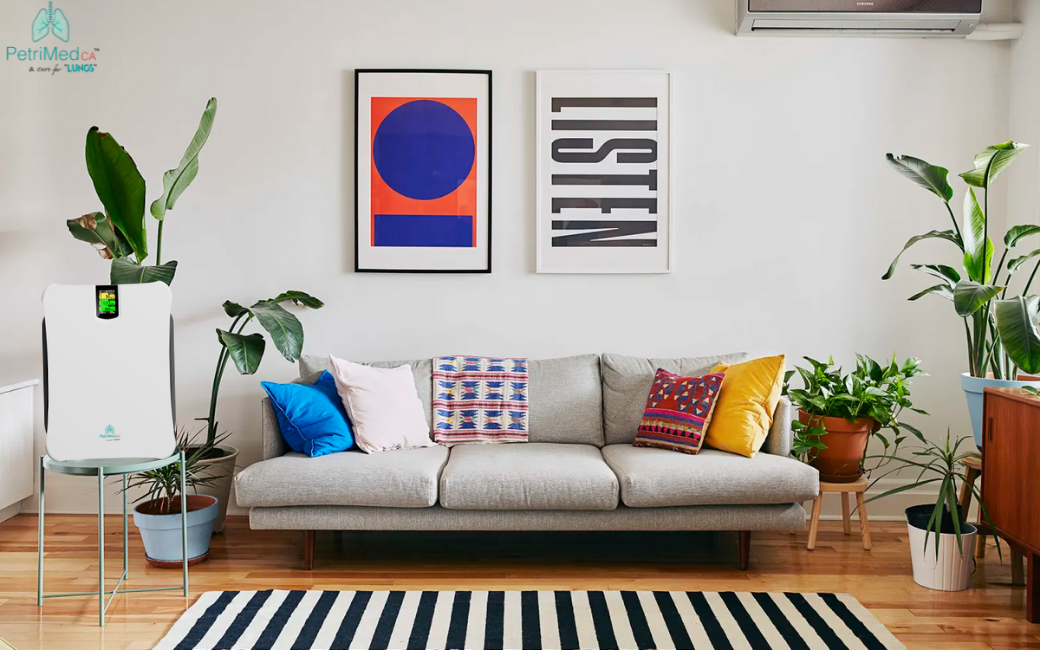Indoor Air Sanitization: Why it’s Important to Disinfect Indoor Air During COVID-19 in India
24 Jan 2022
· Indoor air has several common sources of air pollution releasing harmful tiny particles like dust, pet dander, mold, mites, VOCs etc.
· The Covid virus is an airborne disease that transmits not only by a direct aerosol exchange, but also due to the air shared inside homes or in closed spaces like offices, gyms, schools, hotels, community halls, and others
· We must pay heed to the importance of good indoor air quality, particularly in closed spaces that are poorly ventilated
The discussion on air pollution in India is often periodic, floating up during the winter season when the concentration of airborne pollutants remains high. But Covid-19 has possibly made this problem—particularly regarding poor indoor air quality—an everyday conversation.
Every dark cloud has a silver lining, they say. One positive aspect of the nationwide lockdown due to the Covid outbreak was a sudden improvement in the ambient air quality. Numerous studies have confirmed that lockdown in India has significantly improved the air outdoor thanks to the lower emissions of harmful pollutants through different sources. Yet, the least is debated about the high exposure to harmful pollutants found in homes.
Indoor air has several common sources of air pollution in India, releasing some of the harmful tiny particles like dust, pet dander, mold, mites, VOCs, and others.
Improving Indoor Air Quality Can Be Helpful in Many Ways:
The strict lockdown has caused many people to breathe in household particles like never before. It has emerged as a grave concern for India, where a large number of people use solid fuel in their homes and are exposed to harmful gases. In many homes in India, pets are a centerpiece. But the furry friends can be a major source of some harmful pollutants such as dander and allergens such as saliva, urine, and feces that can trigger allergic reactions.
Therefore, this is the time to take some sustainable precautionary measures that have been due a long time ago.
At this juncture in the ongoing pandemic, it is now clear that the virus is an airborne disease that transmits not only by a direct aerosol exchange, but also due to the air shared inside homes or in closed spaces like offices, gyms, schools, hotels, community halls, and others. Therefore, you must pay heed to the importance of good indoor air quality, particularly in closed spaces that are poorly ventilated.
[Air pollution has been a widespread and visible concern, that has increased significantly over the last decade across many parts of India with severe consequences for human health and well-being. – sciencedirect.com]
Since no single measure can function for all places – large spaces require appropriate ventilation, air purification, and continuous air quality monitoring, instead of thoroughly sterilizing surfaces. Whereas, small spaces should focus on air sanitization by removing tiny particles and volatile organic compounds.
An editorial piece published in The BMJ urges that people infected with COVID-19 release several small respiratory particles burdened with the virus. Many of these particles can easily be inhaled almost immediately, while the remainders spread around and linger in the air even after the infected person leaves the room.
Effective Steps to Improve Indoor Air Quality:
· Ventilation
Purifying indoor air is largely a matter of appropriate ventilation and filtration. The devices required to do it have been around for many years. But it is necessary to try advanced equipment to make it possible at large.
Getting proper ventilation might be as easy as opening a window. But experts believe that it may not work in all conditions. For example, opening a window may ventilate the air perfectly on breezy days. But when it is scorching hot or chilly cold outside with a high concentration of tiny particles, windows cannot be an ideal choice for ventilation. In that condition, an advanced HVAC system should be in place to offer better ventilation in homes.
· Filtration
Another important step is filtration. Experts recommend using high-end equipment for nourishing indoor air if the space where the level of harmful pollutants is high. It should be efficient enough to capture airborne particles laden with the virus and gaseous pollutants. Investing in ordinary air purifiers in India would hardly work against the virus and other harmful pollutants. In its place, there must be an advanced air purification system featuring a HEPA filter along with an activated carbon filter to trap unpleasant odors.
PetriMed CA Air Purification System—developed by River Engineering Pvt. Ltd., a pioneering organization in the field of electrical, magnetic and electro-mechanical for mainline railways, metro rail, aerospace and defense applications — is a fully-loaded air purification system engineered with a HEPA filter, carbon zeolite, a built-in air ionizer, and UV-C disinfector.
· Monitoring
On top of all safety measures, monitoring is another important step that helps know whether people are breathing in safe air. People breathe out carbon dioxide continually. Actually, every respired breath contains around 4% CO2, and the rest contains nitrogen, oxygen and other small compounds. With no proper ventilation and filtration system, the level of CO2 builds up. In that case, people need to use an advanced air quality monitoring device to check the level of pollutants and other tiny particles.
Conclusion:
Covid-19 may well become a regular event, and people will probably learn to live with it after a few years—what we do with influenza. So, the need of the hour is to pay heed to cutting-edge solutions to reduce airborne transmission.
A safe indoor environment protects people against vaccine-resistant variants that may happen to anybody at any time. Until some protective measures are brought into action by the government, using a complete air purification system like PetriMed CA APS 400 can create a safe and healthy indoor space.
